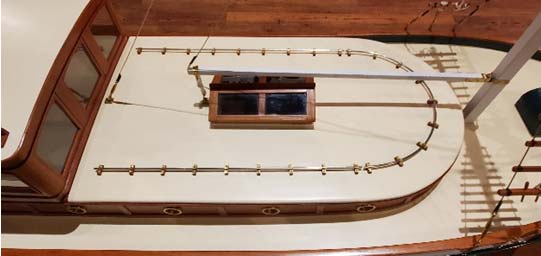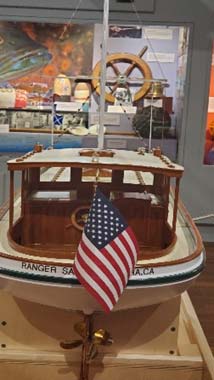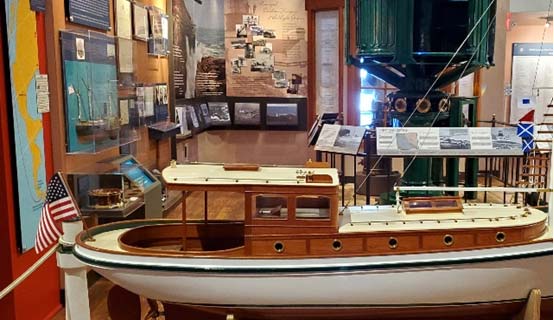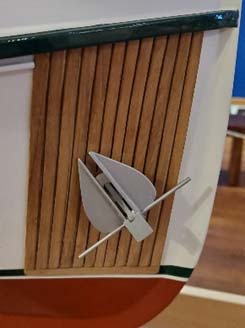CURATOR’S LOG: A New Working Model of the Ranger
By Rita Serotkin
This past month, a new but familiar looking boat sailed into the museum to take its place among the Dwight Brooks models on the main floor; and it is a beauty – a 1:10 scale model of the Santa Barbara Maritime Museum’s flagship Ranger. Whereas the classic wooden yacht Ranger is 41 feet or 492 inches in length, the model Ranger is 49.2 inches long and wa–s built by museum volunteer John Hill in about 1000 hours over 16 months. To learn more about the model, how it was built and why, we met with John on the day the model was installed so that we could ask him about it and have him point out some of its features.
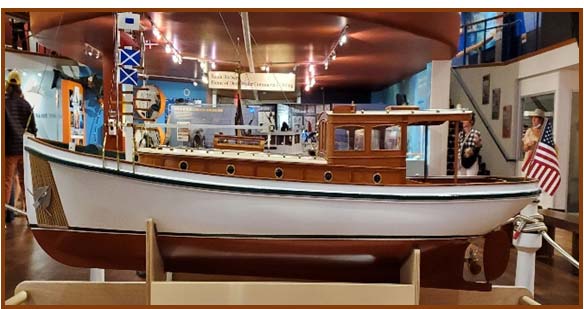
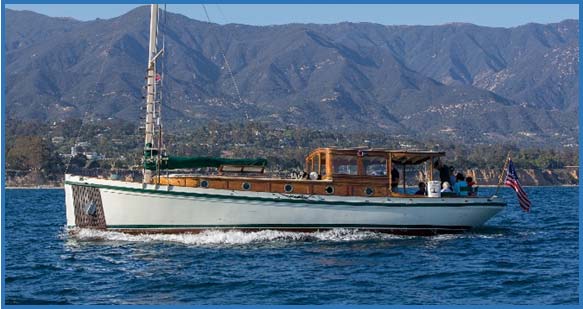
John’s great-grandfather, grandfather, and father were all modelers, and he built plastic models of cars, planes, ships, and tanks while he was growing up. His first “real” modeling experience was a pond yacht that he built when he was 10 and that his granddaughter now sails in Maine. At 21, he built a display model of the yacht America, and since then, has built many radio-controlled planes–large and small, powered and glider, gas and electric–and cars.
When we asked John whether he had ever built another model that was so time consuming, he said that this was his first attempt at a completely “scratch-built” model and he built her from the architectural drawings for the original Ranger yacht. There were no instructions, and his only guidance came from the hundreds of photos that Dwight Brooks took documenting the construction of each of his large scale models. When asked what inspired him to take on this project, he said, “I wasn’t interested in go fast boats or military craft. Ranger has beautiful classic lines, stunning brightwork, and a well-established history in the Southern California yachting world. One of the biggest challenges for scale modelers is access to the prototype to study the details that are not in the plans. Ranger was right here, available any time I needed to check something out. The choice was easy.”
Ranger Jr., as the model has been nicknamed, has a standard 12 volt motor powered by an 8-pound battery and controlled by a radio-controlled electronic speed control, all typical of larger model boats. She handles like a heavy, single screw inboard yacht and has no steerage in reverse, which means the stern moves first. John believes “she handles a lot like Ranger. Someday, I’d like one of Ranger’s captains to take her for a spin and give me their opinion.”
Asked about what parts of the building process were the most fun and the most challenging, John responded by saying, “There are hundreds of little ‘joys’ in building a model like this. The first time you see the shear line from bow to stern, the first and second float tests, the first time you run the motor…I really enjoy fabricating all the details, the wheelhouse woodwork, the skylight, the ships wheel, all the brass hardware, even the flagpole…Working out the challenges, like solving puzzles, is another fun part of modeling. The tougher ones just take longer to sort out.” Because of differences between the original drawings for Ranger, how she was actually built, and how she is now, John had to decide on which configuration of Ranger Jr. he wanted to model, including how to shape and fabricate the fantail. Asked if he would have done anything differently, he indicated that he would have made her a bit bigger, using a 1/8 scale (61-inches long).
